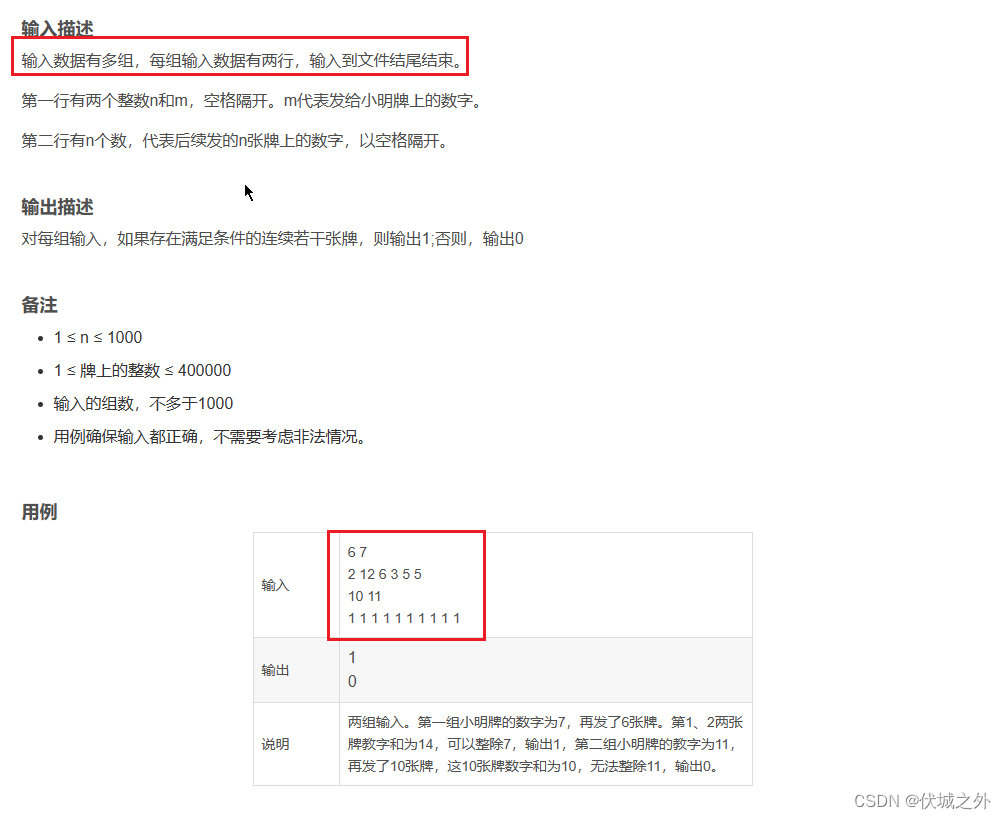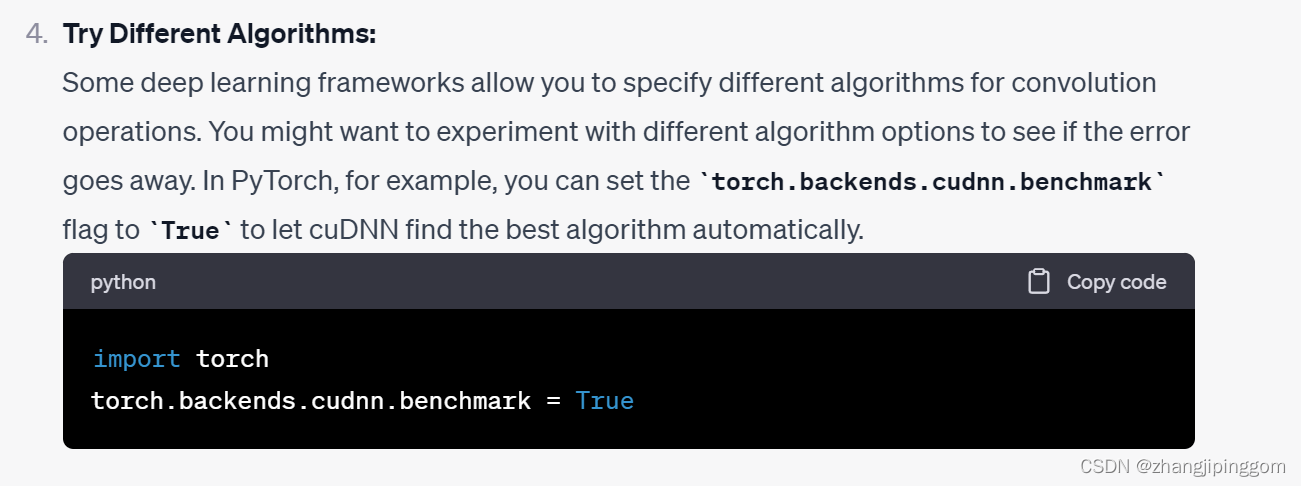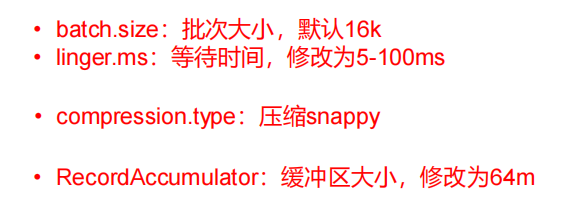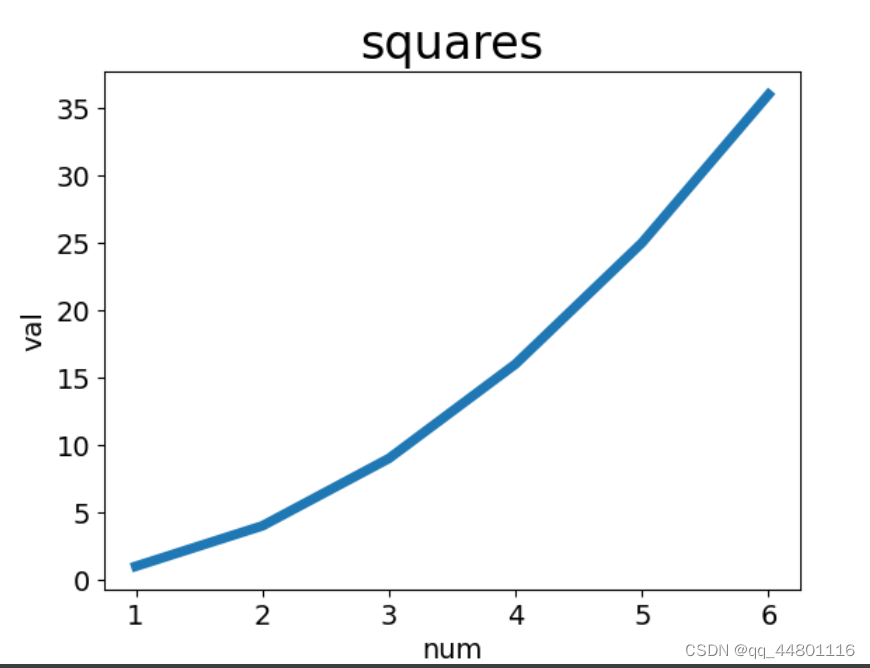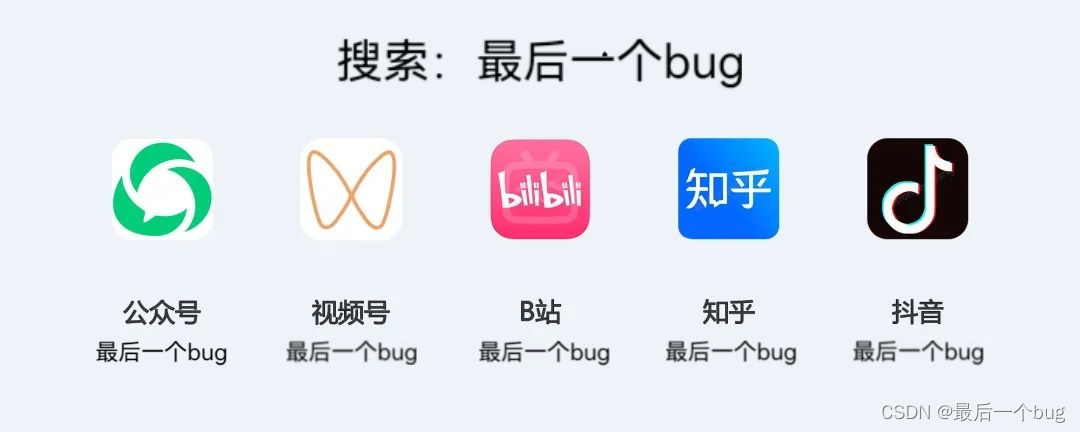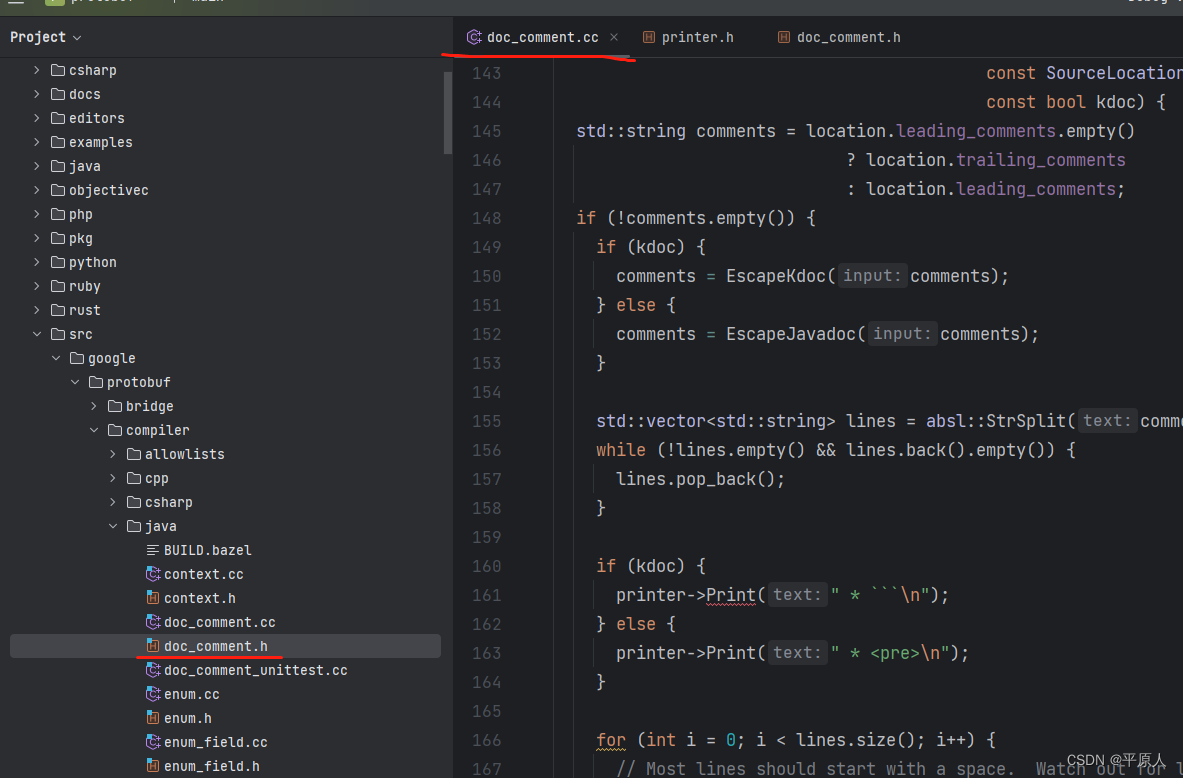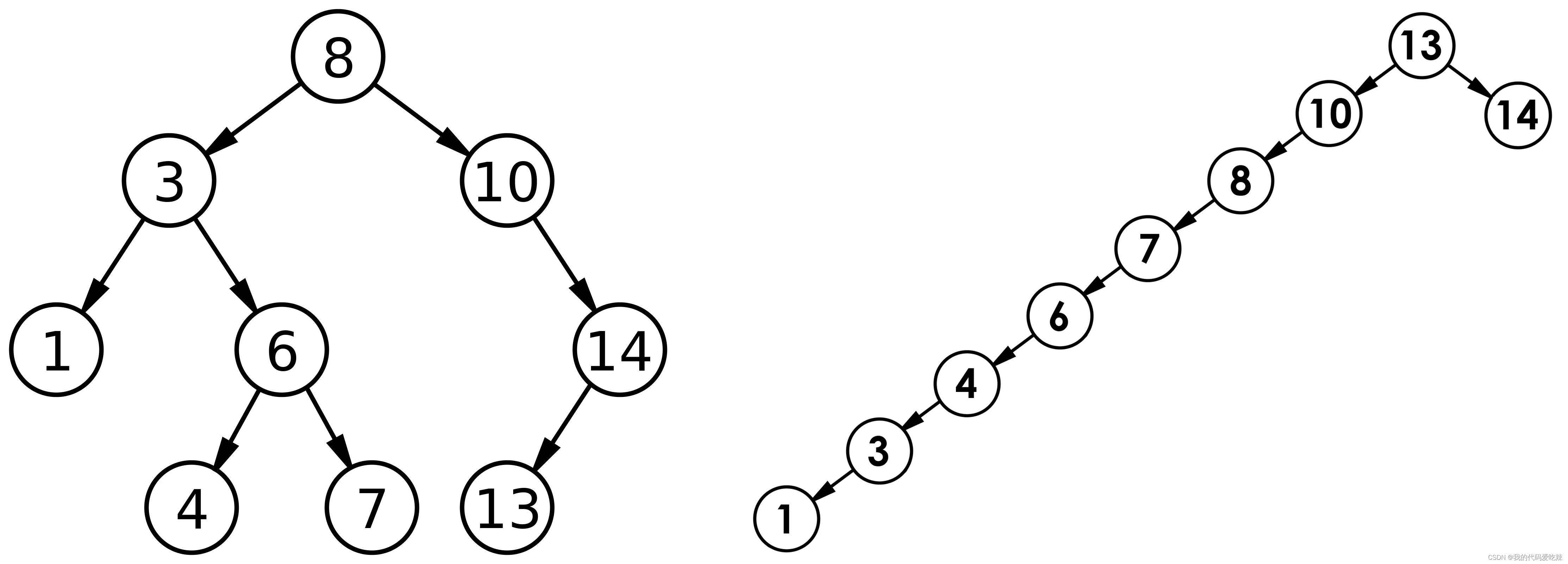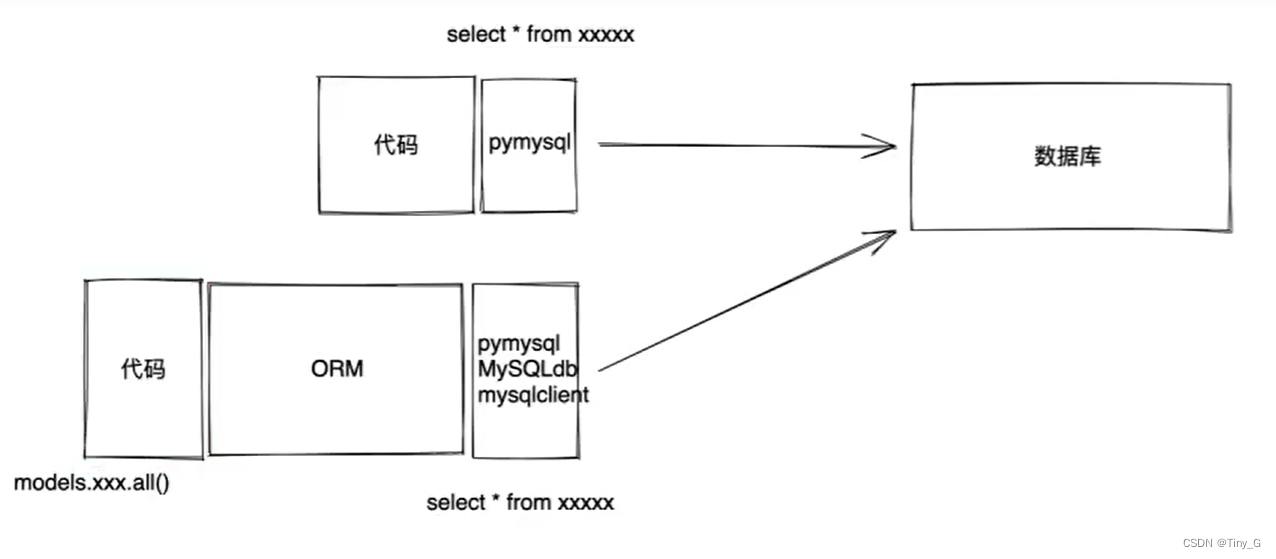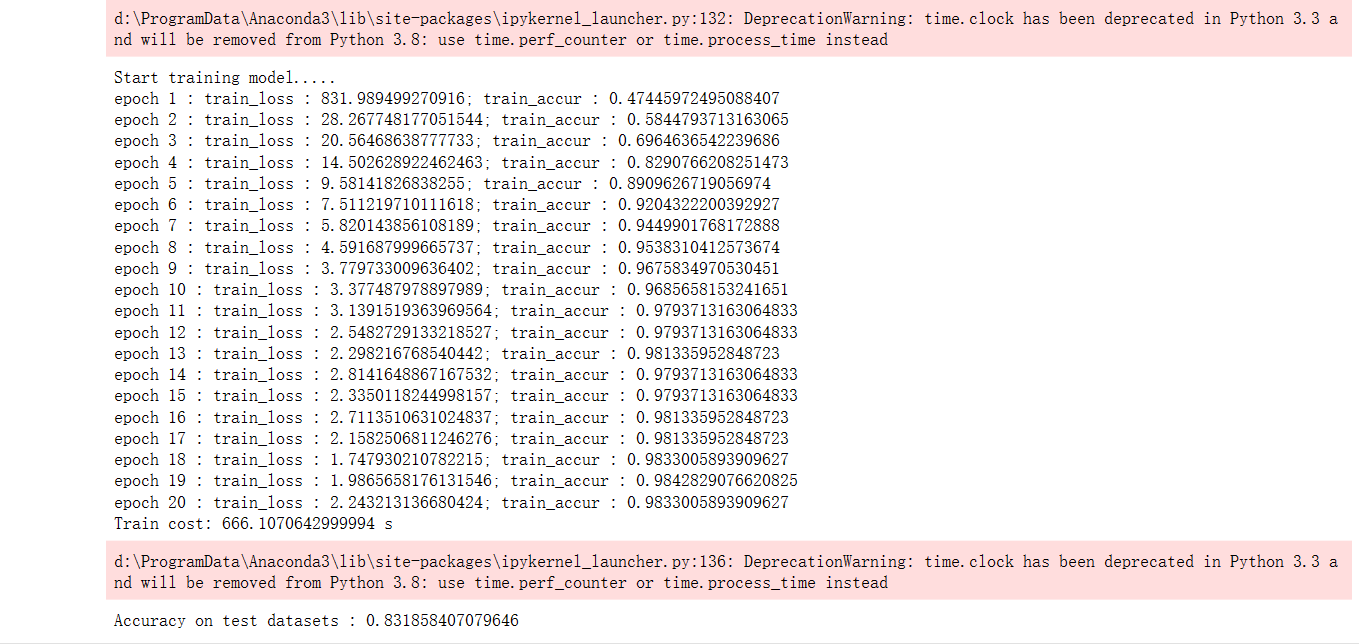模块,用一砣代码实现了某个功能的代码集合。
类似于函数式编程和面向过程编程,函数式编程则完成一个功能,其他代码用来调用即可,提供了代码的重用性和代码间的耦合。而对于一个复杂的功能来,可能需要多个函数才能完成(函数又可以在不同的.py文件中),n个 .py 文件组成的代码集合就称为模块。
如:os 是系统相关的模块;file是文件操作相关的模块
模块分为三种:
- 自定义模块
- 内置模块
- 开源模块
自定义模块
1、定义模块
情景一:

情景二:

情景三:

2、导入模块
Python之所以应用越来越广泛,在一定程度上也依赖于其为程序员提供了大量的模块以供使用,如果想要使用模块,则需要导入。导入模块有一下几种方法:
import module
from module.xx.xx import xx
from module.xx.xx import xx as rename
from module.xx.xx import *
导入模块其实就是告诉Python解释器去解释那个py文件
- 导入一个py文件,解释器解释该py文件
- 导入一个包,解释器解释该包下的 init.py 文件
开源模块
一、下载安装
下载安装有两种方式:


yum
pip
apt-get
...
方式一


下载源码
解压源码
进入目录
编译源码 python setup.py build
安装源码 python setup.py install
方式二
注:在使用源码安装时,需要使用到gcc编译和python开发环境,所以,需要先执行:yum install gcc
yum install python-devel
或
apt-get python-dev
安装成功后,模块会自动安装到 sys.path 中的某个目录中,如:
/usr/lib/python2.7/site-packages/
二、导入模块
同自定义模块中导入的方式
三、模块 paramiko
paramiko是一个用于做远程控制的模块,使用该模块可以对远程服务器进行命令或文件操作,值得一说的是,fabric和ansible内部的远程管理就是使用的paramiko来现实。
1、下载安装
# pycrypto,由于 paramiko 模块内部依赖pycrypto,所以先下载安装pycrypto# 下载安装 pycrypto
wget https://files.cnblogs.com/files/wupeiqi/pycrypto-2.6.1.tar.gz
tar -xvf pycrypto-2.6.1.tar.gz
cd pycrypto-2.6.1
python setup.py build
python setup.py install# 进入python环境,导入Crypto检查是否安装成功# 下载安装 paramiko
wget https://files.cnblogs.com/files/wupeiqi/paramiko-1.10.1.tar.gz
tar -xvf paramiko-1.10.1.tar.gz
cd paramiko-1.10.1
python setup.py build
python setup.py install# 进入python环境,导入paramiko检查是否安装成功
2、使用模块


#!/usr/bin/env python
#coding:utf-8import paramikossh = paramiko.SSHClient()
ssh.set_missing_host_key_policy(paramiko.AutoAddPolicy())
ssh.connect('192.168.1.108', 22, 'alex', '123')
stdin, stdout, stderr = ssh.exec_command('df')
print stdout.read()
ssh.close();
执行命令 - 通过用户名和密码连接服务器


import paramikoprivate_key_path = '/home/auto/.ssh/id_rsa'
key = paramiko.RSAKey.from_private_key_file(private_key_path)ssh = paramiko.SSHClient()
ssh.set_missing_host_key_policy(paramiko.AutoAddPolicy())
ssh.connect('主机名 ', 端口, '用户名', key)stdin, stdout, stderr = ssh.exec_command('df')
print stdout.read()
ssh.close()
执行命令 - 过密钥链接服务器


import os,sys
import paramikot = paramiko.Transport(('182.92.219.86',22))
t.connect(username='wupeiqi',password='123')
sftp = paramiko.SFTPClient.from_transport(t)
sftp.put('/tmp/test.py','/tmp/test.py')
t.close()import os,sys
import paramikot = paramiko.Transport(('182.92.219.86',22))
t.connect(username='wupeiqi',password='123')
sftp = paramiko.SFTPClient.from_transport(t)
sftp.get('/tmp/test.py','/tmp/test2.py')
t.close()
上传或者下载文件 - 通过用户名和密码


import paramikopravie_key_path = '/home/auto/.ssh/id_rsa'
key = paramiko.RSAKey.from_private_key_file(pravie_key_path)t = paramiko.Transport(('182.92.219.86',22))
t.connect(username='wupeiqi',pkey=key)sftp = paramiko.SFTPClient.from_transport(t)
sftp.put('/tmp/test3.py','/tmp/test3.py') t.close()import paramikopravie_key_path = '/home/auto/.ssh/id_rsa'
key = paramiko.RSAKey.from_private_key_file(pravie_key_path)t = paramiko.Transport(('182.92.219.86',22))
t.connect(username='wupeiqi',pkey=key)sftp = paramiko.SFTPClient.from_transport(t)
sftp.get('/tmp/test3.py','/tmp/test4.py') t.close()
上传或下载文件 - 通过密钥
内置模块
time & datetime模块
import time
import datetimetime
print(time.clock()) #返回处理器时间,3.3以后废弃 4.444098792316153e-07
print(time.process_time()) #返回处理器时间 0.031200199999999997
print(time.time()) #返回当前系统时间戳 1463472071.3892002
print(time.ctime()) #返回当前系统时间 Tue May 17 16:01:11 2016
print(time.ctime(time.time()-86400)) #转换成字符串格式 Mon May 16 16:01:11 2016
print(time.gmtime(time.time()-86400)) #将时间戳转换成struct_time格式 time.struct_time(tm_year=2016, tm_mon=5, tm_mday=16, tm_hour=8, tm_min=1, tm_sec=11, tm_wday=0, tm_yday=137, tm_isdst=0)
print(time.localtime(time.time()-86400)) #将时间戳转换成struct_time格式,本地时间。 time.struct_time(tm_year=2016, tm_mon=5, tm_mday=16, tm_hour=16, tm_min=13, tm_sec=25, tm_wday=0, tm_yday=137, tm_isdst=0)
print(time.mktime(time.localtime())) #与time.localtime()功能相反,将struct_time格式转回成时间戳格式 1463472904.0
time.sleep(4) #sleep 每隔四秒以执行
print(time.strftime("%Y-%m-%d %H:%M:%S",time.gmtime()) ) #将struct_time格式转成指定的字符串格式 2016-05-17 08:16:22datetime
print(datetime.date.today()) #输出格式 2016-05-17
print(datetime.date.fromtimestamp(time.time()-86400) ) # 将时间戳转成日期格式 2016-05-16
current_time = datetime.datetime.now() #
print(current_time) #输出2016-05-17 16:17:59.863200
print(current_time.timetuple()) #返回struct_time格式 time.struct_time(tm_year=2016, tm_mon=5, tm_mday=17, tm_hour=16, tm_min=17, tm_sec=59, tm_wday=1, tm_yday=138, tm_isdst=-1)#datetime.replace([year[, month[, day[, hour[, minute[, second[, microsecond[, tzinfo]]]]]]]])
print(current_time.replace(2016,5,17)) #输出2016-05-17 16:19:33.753200,返回当前时间,但指定的值将被替换str_to_date = datetime.datetime.strptime("21/11/06 16:30", "%d/%m/%y %H:%M") #将字符串转换成日期格式
new_date1 = datetime.datetime.now() + datetime.timedelta(days=10) #比现在加10天 2016-05-27 16:21:16.279200
new_date2 = datetime.datetime.now() + datetime.timedelta(days=-10) #比现在减10天 2016-05-07 16:21:44.459200
new_date3 = datetime.datetime.now() + datetime.timedelta(hours=-10) #比现在减10小时 2016-05-17 06:22:01.299200
new_date4 = datetime.datetime.now() + datetime.timedelta(seconds=120) #比现在+120s 2016-05-17 16:24:10.917200
new_date5 = datetime.datetime.now() + datetime.timedelta(weeks=20) #比现在+10周 2016-10-04 16:23:02.904200
print(new_date5)
| Directive | Meaning | Notes |
|---|---|---|
%a | Locale’s abbreviated weekday name. | |
%A | Locale’s full weekday name. | |
%b | Locale’s abbreviated month name. | |
%B | Locale’s full month name. | |
%c | Locale’s appropriate date and time representation. | |
%d | Day of the month as a decimal number [01,31]. | |
%H | Hour (24-hour clock) as a decimal number [00,23]. | |
%I | Hour (12-hour clock) as a decimal number [01,12]. | |
%j | Day of the year as a decimal number [001,366]. | |
%m | Month as a decimal number [01,12]. | |
%M | Minute as a decimal number [00,59]. | |
%p | Locale’s equivalent of either AM or PM. | (1) |
%S | Second as a decimal number [00,61]. | (2) |
%U | Week number of the year (Sunday as the first day of the week) as a decimal number [00,53]. All days in a new year preceding the first Sunday are considered to be in week 0. | (3) |
%w | Weekday as a decimal number [0(Sunday),6]. | |
%W | Week number of the year (Monday as the first day of the week) as a decimal number [00,53]. All days in a new year preceding the first Monday are considered to be in week 0. | (3) |
%x | Locale’s appropriate date representation. | |
%X | Locale’s appropriate time representation. | |
%y | Year without century as a decimal number [00,99]. | |
%Y | Year with century as a decimal number. | |
%z | Time zone offset indicating a positive or negative time difference from UTC/GMT of the form +HHMM or -HHMM, where H represents decimal hour digits and M represents decimal minute digits [-23:59, +23:59]. | |
%Z | Time zone name (no characters if no time zone exists). | |
%% | A literal '%' character. |
random模块
随机数
mport random
print random.random()
print random.randint(1,2)
print random.randrange(1,10)
生成随机验证码
import random
tmp = ""
for i in range(6):rad1 = random.randrange(4)if rad1 ==1 or rad1 ==3:rad2 = random.randrange(0,9)tmp += str(rad2)else:rad3 = random.randrange(65,90)tmp += chr(rad3)
print(tmp)
sys模块
import sys
import time
print(sys.argv) #['C:/Users/Administrator/PycharmProjects/zyl/day-6/datetime,time模块/SYS.PY.py']print(sys.path) #返回模块的搜索路径,初始化时使用PYTHONPATH环境变量的值print(exit()) #退出程序,正常退出时exit(0)print(sys.version) #3.5.1 (v3.5.1:37a07cee5969, Dec 6 2015, 01:54:25) [MSC v.1900 64 bit (AMD64)]print(sys.maxsize) #9223372036854775807 最大的Int值print(sys.platform) #win32 操作系统类型####################################安装包流程不换行显示##################################
for i in range(31):sys.stdout.write("\r") #清空当前数据网上叠加sys.stdout.write("%s%% | %s " %(int(i/30*100),int(i/30*100)*"#"))sys.stdout.flush()time.sleep(0.3)####################################安装流程换行显示####################################for i in range(101):sys.stdout.write("\r")sys.stdout.write("%s%% | %s \n" %(i,i*"#"))sys.stdout.flush()time.sleep(0.1)
json & pickle 模块
用于序列化的两个模块
- json,用于字符串 和 python数据类型间进行转换
- pickle,用于python特有的类型 和 python的数据类型间进行转换
Json模块提供了四个功能:dumps、dump、loads、load
pickle模块提供了四个功能:dumps、dump、loads、load


import pickleaccounts = {1000: {'name':'Zhangyanlin','email': '75501664@126.com','passwd': 'abc123','balance': 15000,'phone': 13651054608,'bank_acc':{'ICBC':14324234,'CBC' : 235234,'ABC' : 35235423}},1001: {'name': 'CaiXin Guo','email': 'caixin@126.com','passwd': 'abc145323','balance': -15000,'phone': 1345635345,'bank_acc': {'ICBC': 4334343,}},
}################################原始写入文件中去###############################
with open("zhang","wb") as f:f.write(pickle.dumps(accounts)) #打开文件将原数据保存到文件中################################购物环节#######################################
with open("zhang","rb") as f:zhang_dic = pickle.loads(f.read()) #读取出文件里的内容赋值给zhang_dic变量zhang_dic[1000]['balance'] -= 1000 #购物消费100,总价减去1000块钱with open("zhang","wb") as f:f.write(pickle.dumps(zhang_dic)) #写入到数据中去##############################刷新购物后文件里面的数据#########################with open("zhang","rb") as f:shop_old = pickle.loads(f.read()) #把新数据更新到文件中去
print(shop_old)
pickle 购物实例


#json.loads(参数)将字符串转换成python识别的字符
li = '[11,22,33,44,55,66,77,88,99]'
dic = '{"sdkf":"123","askd":"123"}'
print(json.loads(li),type(json.loads(li))) #列表类型
print(json.loads(dic),type(json.loads(dic))) #字典类型#json.dumps(参数)将python字符转换成其他语言识别的字符
li = [11,22,33,44,55]
dic = {"sdkf":"123","askd":"123"}
print(json.dumps(li),type(json.dumps(li))) #转成字符串
print(json.dumps(dic),type(json.dumps(dic))) #转成字符串
Json实例
collection系列
1、计数器(counter)
Counter是对字典类型的补充,用于追踪值的出现次数。
ps:具备字典的所有功能 + 自己的功能
c = Counter('abcdeabcdabcaba')
print c
输出:Counter({'a': 5, 'b': 4, 'c': 3, 'd': 2, 'e': 1})


########################################################################
### Counter
########################################################################class Counter(dict):'''Dict subclass for counting hashable items. Sometimes called a bagor multiset. Elements are stored as dictionary keys and their countsare stored as dictionary values.>>> c = Counter('abcdeabcdabcaba') # count elements from a string>>> c.most_common(3) # three most common elements[('a', 5), ('b', 4), ('c', 3)]>>> sorted(c) # list all unique elements['a', 'b', 'c', 'd', 'e']>>> ''.join(sorted(c.elements())) # list elements with repetitions'aaaaabbbbcccdde'>>> sum(c.values()) # total of all counts>>> c['a'] # count of letter 'a'>>> for elem in 'shazam': # update counts from an iterable... c[elem] += 1 # by adding 1 to each element's count>>> c['a'] # now there are seven 'a'>>> del c['b'] # remove all 'b'>>> c['b'] # now there are zero 'b'>>> d = Counter('simsalabim') # make another counter>>> c.update(d) # add in the second counter>>> c['a'] # now there are nine 'a'>>> c.clear() # empty the counter>>> cCounter()Note: If a count is set to zero or reduced to zero, it will remainin the counter until the entry is deleted or the counter is cleared:>>> c = Counter('aaabbc')>>> c['b'] -= 2 # reduce the count of 'b' by two>>> c.most_common() # 'b' is still in, but its count is zero[('a', 3), ('c', 1), ('b', 0)]'''# References:# http://en.wikipedia.org/wiki/Multiset# http://www.gnu.org/software/smalltalk/manual-base/html_node/Bag.html# http://www.demo2s.com/Tutorial/Cpp/0380__set-multiset/Catalog0380__set-multiset.htm# http://code.activestate.com/recipes/259174/# Knuth, TAOCP Vol. II section 4.6.3def __init__(self, iterable=None, **kwds):'''Create a new, empty Counter object. And if given, count elementsfrom an input iterable. Or, initialize the count from another mappingof elements to their counts.>>> c = Counter() # a new, empty counter>>> c = Counter('gallahad') # a new counter from an iterable>>> c = Counter({'a': 4, 'b': 2}) # a new counter from a mapping>>> c = Counter(a=4, b=2) # a new counter from keyword args'''super(Counter, self).__init__()self.update(iterable, **kwds)def __missing__(self, key):""" 对于不存在的元素,返回计数器为0 """'The count of elements not in the Counter is zero.'# Needed so that self[missing_item] does not raise KeyErrorreturn 0def most_common(self, n=None):""" 数量大于等n的所有元素和计数器 """'''List the n most common elements and their counts from the mostcommon to the least. If n is None, then list all element counts.>>> Counter('abcdeabcdabcaba').most_common(3)[('a', 5), ('b', 4), ('c', 3)]'''# Emulate Bag.sortedByCount from Smalltalkif n is None:return sorted(self.iteritems(), key=_itemgetter(1), reverse=True)return _heapq.nlargest(n, self.iteritems(), key=_itemgetter(1))def elements(self):""" 计数器中的所有元素,注:此处非所有元素集合,而是包含所有元素集合的迭代器 """'''Iterator over elements repeating each as many times as its count.>>> c = Counter('ABCABC')>>> sorted(c.elements())['A', 'A', 'B', 'B', 'C', 'C']# Knuth's example for prime factors of 1836: 2**2 * 3**3 * 17**1>>> prime_factors = Counter({2: 2, 3: 3, 17: 1})>>> product = 1>>> for factor in prime_factors.elements(): # loop over factors... product *= factor # and multiply them>>> productNote, if an element's count has been set to zero or is a negativenumber, elements() will ignore it.'''# Emulate Bag.do from Smalltalk and Multiset.begin from C++.return _chain.from_iterable(_starmap(_repeat, self.iteritems()))# Override dict methods where necessary@classmethoddef fromkeys(cls, iterable, v=None):# There is no equivalent method for counters because setting v=1# means that no element can have a count greater than one.raise NotImplementedError('Counter.fromkeys() is undefined. Use Counter(iterable) instead.')def update(self, iterable=None, **kwds):""" 更新计数器,其实就是增加;如果原来没有,则新建,如果有则加一 """'''Like dict.update() but add counts instead of replacing them.Source can be an iterable, a dictionary, or another Counter instance.>>> c = Counter('which')>>> c.update('witch') # add elements from another iterable>>> d = Counter('watch')>>> c.update(d) # add elements from another counter>>> c['h'] # four 'h' in which, witch, and watch'''# The regular dict.update() operation makes no sense here because the# replace behavior results in the some of original untouched counts# being mixed-in with all of the other counts for a mismash that# doesn't have a straight-forward interpretation in most counting# contexts. Instead, we implement straight-addition. Both the inputs# and outputs are allowed to contain zero and negative counts.if iterable is not None:if isinstance(iterable, Mapping):if self:self_get = self.getfor elem, count in iterable.iteritems():self[elem] = self_get(elem, 0) + countelse:super(Counter, self).update(iterable) # fast path when counter is emptyelse:self_get = self.getfor elem in iterable:self[elem] = self_get(elem, 0) + 1if kwds:self.update(kwds)def subtract(self, iterable=None, **kwds):""" 相减,原来的计数器中的每一个元素的数量减去后添加的元素的数量 """'''Like dict.update() but subtracts counts instead of replacing them.Counts can be reduced below zero. Both the inputs and outputs areallowed to contain zero and negative counts.Source can be an iterable, a dictionary, or another Counter instance.>>> c = Counter('which')>>> c.subtract('witch') # subtract elements from another iterable>>> c.subtract(Counter('watch')) # subtract elements from another counter>>> c['h'] # 2 in which, minus 1 in witch, minus 1 in watch>>> c['w'] # 1 in which, minus 1 in witch, minus 1 in watch-1'''if iterable is not None:self_get = self.getif isinstance(iterable, Mapping):for elem, count in iterable.items():self[elem] = self_get(elem, 0) - countelse:for elem in iterable:self[elem] = self_get(elem, 0) - 1if kwds:self.subtract(kwds)def copy(self):""" 拷贝 """'Return a shallow copy.'return self.__class__(self)def __reduce__(self):""" 返回一个元组(类型,元组) """return self.__class__, (dict(self),)def __delitem__(self, elem):""" 删除元素 """'Like dict.__delitem__() but does not raise KeyError for missing values.'if elem in self:super(Counter, self).__delitem__(elem)def __repr__(self):if not self:return '%s()' % self.__class__.__name__items = ', '.join(map('%r: %r'.__mod__, self.most_common()))return '%s({%s})' % (self.__class__.__name__, items)# Multiset-style mathematical operations discussed in:# Knuth TAOCP Volume II section 4.6.3 exercise 19# and at http://en.wikipedia.org/wiki/Multiset## Outputs guaranteed to only include positive counts.## To strip negative and zero counts, add-in an empty counter:# c += Counter()def __add__(self, other):'''Add counts from two counters.>>> Counter('abbb') + Counter('bcc')Counter({'b': 4, 'c': 2, 'a': 1})'''if not isinstance(other, Counter):return NotImplementedresult = Counter()for elem, count in self.items():newcount = count + other[elem]if newcount > 0:result[elem] = newcountfor elem, count in other.items():if elem not in self and count > 0:result[elem] = countreturn resultdef __sub__(self, other):''' Subtract count, but keep only results with positive counts.>>> Counter('abbbc') - Counter('bccd')Counter({'b': 2, 'a': 1})'''if not isinstance(other, Counter):return NotImplementedresult = Counter()for elem, count in self.items():newcount = count - other[elem]if newcount > 0:result[elem] = newcountfor elem, count in other.items():if elem not in self and count < 0:result[elem] = 0 - countreturn resultdef __or__(self, other):'''Union is the maximum of value in either of the input counters.>>> Counter('abbb') | Counter('bcc')Counter({'b': 3, 'c': 2, 'a': 1})'''if not isinstance(other, Counter):return NotImplementedresult = Counter()for elem, count in self.items():other_count = other[elem]newcount = other_count if count < other_count else countif newcount > 0:result[elem] = newcountfor elem, count in other.items():if elem not in self and count > 0:result[elem] = countreturn resultdef __and__(self, other):''' Intersection is the minimum of corresponding counts.>>> Counter('abbb') & Counter('bcc')Counter({'b': 1})'''if not isinstance(other, Counter):return NotImplementedresult = Counter()for elem, count in self.items():other_count = other[elem]newcount = count if count < other_count else other_countif newcount > 0:result[elem] = newcountreturn resultCounter
collection
2、有序字典(orderedDict )
orderdDict是对字典类型的补充,他记住了字典元素添加的顺序


class OrderedDict(dict):'Dictionary that remembers insertion order'# An inherited dict maps keys to values.# The inherited dict provides __getitem__, __len__, __contains__, and get.# The remaining methods are order-aware.# Big-O running times for all methods are the same as regular dictionaries.# The internal self.__map dict maps keys to links in a doubly linked list.# The circular doubly linked list starts and ends with a sentinel element.# The sentinel element never gets deleted (this simplifies the algorithm).# Each link is stored as a list of length three: [PREV, NEXT, KEY].def __init__(self, *args, **kwds):'''Initialize an ordered dictionary. The signature is the same asregular dictionaries, but keyword arguments are not recommended becausetheir insertion order is arbitrary.'''if len(args) > 1:raise TypeError('expected at most 1 arguments, got %d' % len(args))try:self.__rootexcept AttributeError:self.__root = root = [] # sentinel noderoot[:] = [root, root, None]self.__map = {}self.__update(*args, **kwds)def __setitem__(self, key, value, dict_setitem=dict.__setitem__):'od.__setitem__(i, y) <==> od[i]=y'# Setting a new item creates a new link at the end of the linked list,# and the inherited dictionary is updated with the new key/value pair.if key not in self:root = self.__rootlast = root[0]last[1] = root[0] = self.__map[key] = [last, root, key]return dict_setitem(self, key, value)def __delitem__(self, key, dict_delitem=dict.__delitem__):'od.__delitem__(y) <==> del od[y]'# Deleting an existing item uses self.__map to find the link which gets# removed by updating the links in the predecessor and successor nodes.dict_delitem(self, key)link_prev, link_next, _ = self.__map.pop(key)link_prev[1] = link_next # update link_prev[NEXT]link_next[0] = link_prev # update link_next[PREV]def __iter__(self):'od.__iter__() <==> iter(od)'# Traverse the linked list in order.root = self.__rootcurr = root[1] # start at the first nodewhile curr is not root:yield curr[2] # yield the curr[KEY]curr = curr[1] # move to next nodedef __reversed__(self):'od.__reversed__() <==> reversed(od)'# Traverse the linked list in reverse order.root = self.__rootcurr = root[0] # start at the last nodewhile curr is not root:yield curr[2] # yield the curr[KEY]curr = curr[0] # move to previous nodedef clear(self):'od.clear() -> None. Remove all items from od.'root = self.__rootroot[:] = [root, root, None]self.__map.clear()dict.clear(self)# -- the following methods do not depend on the internal structure --def keys(self):'od.keys() -> list of keys in od'return list(self)def values(self):'od.values() -> list of values in od'return [self[key] for key in self]def items(self):'od.items() -> list of (key, value) pairs in od'return [(key, self[key]) for key in self]def iterkeys(self):'od.iterkeys() -> an iterator over the keys in od'return iter(self)def itervalues(self):'od.itervalues -> an iterator over the values in od'for k in self:yield self[k]def iteritems(self):'od.iteritems -> an iterator over the (key, value) pairs in od'for k in self:yield (k, self[k])update = MutableMapping.update__update = update # let subclasses override update without breaking __init____marker = object()def pop(self, key, default=__marker):'''od.pop(k[,d]) -> v, remove specified key and return the correspondingvalue. If key is not found, d is returned if given, otherwise KeyErroris raised.'''if key in self:result = self[key]del self[key]return resultif default is self.__marker:raise KeyError(key)return defaultdef setdefault(self, key, default=None):'od.setdefault(k[,d]) -> od.get(k,d), also set od[k]=d if k not in od'if key in self:return self[key]self[key] = defaultreturn defaultdef popitem(self, last=True):'''od.popitem() -> (k, v), return and remove a (key, value) pair.Pairs are returned in LIFO order if last is true or FIFO order if false.'''if not self:raise KeyError('dictionary is empty')key = next(reversed(self) if last else iter(self))value = self.pop(key)return key, valuedef __repr__(self, _repr_running={}):'od.__repr__() <==> repr(od)'call_key = id(self), _get_ident()if call_key in _repr_running:return '...'_repr_running[call_key] = 1try:if not self:return '%s()' % (self.__class__.__name__,)return '%s(%r)' % (self.__class__.__name__, self.items())finally:del _repr_running[call_key]def __reduce__(self):'Return state information for pickling'items = [[k, self[k]] for k in self]inst_dict = vars(self).copy()for k in vars(OrderedDict()):inst_dict.pop(k, None)if inst_dict:return (self.__class__, (items,), inst_dict)return self.__class__, (items,)def copy(self):'od.copy() -> a shallow copy of od'return self.__class__(self)@classmethoddef fromkeys(cls, iterable, value=None):'''OD.fromkeys(S[, v]) -> New ordered dictionary with keys from S.If not specified, the value defaults to None.'''self = cls()for key in iterable:self[key] = valuereturn selfdef __eq__(self, other):'''od.__eq__(y) <==> od==y. Comparison to another OD is order-sensitivewhile comparison to a regular mapping is order-insensitive.'''if isinstance(other, OrderedDict):return dict.__eq__(self, other) and all(_imap(_eq, self, other))return dict.__eq__(self, other)def __ne__(self, other):'od.__ne__(y) <==> od!=y'return not self == other# -- the following methods support python 3.x style dictionary views --def viewkeys(self):"od.viewkeys() -> a set-like object providing a view on od's keys"return KeysView(self)def viewvalues(self):"od.viewvalues() -> an object providing a view on od's values"return ValuesView(self)def viewitems(self):"od.viewitems() -> a set-like object providing a view on od's items"return ItemsView(self)
orderedDict
3、默认字典(defaultdict)
学前需求:
有如下值集合 [11,22,33,44,55,66,77,88,99,90...],将所有大于 66 的值保存至字典的第一个key中,将小于 66 的值保存至第二个key的值中。
即: {'k1': 大于66 , 'k2': 小于66}


values = [11, 22, 33,44,55,66,77,88,99,90]my_dict = {}for value in values:if value>66:if my_dict.has_key('k1'):my_dict['k1'].append(value)else:my_dict['k1'] = [value]else:if my_dict.has_key('k2'):my_dict['k2'].append(value)else:my_dict['k2'] = [value]
原生字典


from collections import defaultdictvalues = [11, 22, 33,44,55,66,77,88,99,90]my_dict = defaultdict(list)for value in values:if value>66:my_dict['k1'].append(value)else:my_dict['k2'].append(value)
defaultdict解决方法
defaultdict是对字典的类型的补充,他默认给字典的值设置了一个类型。


class defaultdict(dict):"""defaultdict(default_factory[, ...]) --> dict with default factoryThe default factory is called without arguments to producea new value when a key is not present, in __getitem__ only.A defaultdict compares equal to a dict with the same items.All remaining arguments are treated the same as if they werepassed to the dict constructor, including keyword arguments."""def copy(self): # real signature unknown; restored from __doc__""" D.copy() -> a shallow copy of D. """passdef __copy__(self, *args, **kwargs): # real signature unknown""" D.copy() -> a shallow copy of D. """passdef __getattribute__(self, name): # real signature unknown; restored from __doc__""" x.__getattribute__('name') <==> x.name """passdef __init__(self, default_factory=None, **kwargs): # known case of _collections.defaultdict.__init__"""defaultdict(default_factory[, ...]) --> dict with default factoryThe default factory is called without arguments to producea new value when a key is not present, in __getitem__ only.A defaultdict compares equal to a dict with the same items.All remaining arguments are treated the same as if they werepassed to the dict constructor, including keyword arguments.# (copied from class doc)"""passdef __missing__(self, key): # real signature unknown; restored from __doc__"""__missing__(key) # Called by __getitem__ for missing key; pseudo-code:if self.default_factory is None: raise KeyError((key,))self[key] = value = self.default_factory()return value"""passdef __reduce__(self, *args, **kwargs): # real signature unknown""" Return state information for pickling. """passdef __repr__(self): # real signature unknown; restored from __doc__""" x.__repr__() <==> repr(x) """passdefault_factory = property(lambda self: object(), lambda self, v: None, lambda self: None) # default"""Factory for default value called by __missing__()."""
defaultdict
4、可命名元组(namedtuple)
根据nametuple可以创建一个包含tuple所有功能以及其他功能的类型。
import collectionsMytuple = collections.namedtuple('Mytuple',['x', 'y', 'z'])


class Mytuple(__builtin__.tuple)| Mytuple(x, y)| | Method resolution order:| Mytuple| __builtin__.tuple| __builtin__.object| | Methods defined here:| | __getnewargs__(self)| Return self as a plain tuple. Used by copy and pickle.| | __getstate__(self)| Exclude the OrderedDict from pickling| | __repr__(self)| Return a nicely formatted representation string| | _asdict(self)| Return a new OrderedDict which maps field names to their values| | _replace(_self, **kwds)| Return a new Mytuple object replacing specified fields with new values| | ----------------------------------------------------------------------| Class methods defined here:| | _make(cls, iterable, new=<built-in method __new__ of type object>, len=<built-in function len>) from __builtin__.type| Make a new Mytuple object from a sequence or iterable| | ----------------------------------------------------------------------| Static methods defined here:| | __new__(_cls, x, y)| Create new instance of Mytuple(x, y)| | ----------------------------------------------------------------------| Data descriptors defined here:| | __dict__| Return a new OrderedDict which maps field names to their values| | x| Alias for field number 0| | y| Alias for field number 1| | ----------------------------------------------------------------------| Data and other attributes defined here:| | _fields = ('x', 'y')| | ----------------------------------------------------------------------| Methods inherited from __builtin__.tuple:| | __add__(...)| x.__add__(y) <==> x+y| | __contains__(...)| x.__contains__(y) <==> y in x| | __eq__(...)| x.__eq__(y) <==> x==y| | __ge__(...)| x.__ge__(y) <==> x>=y| | __getattribute__(...)| x.__getattribute__('name') <==> x.name| | __getitem__(...)| x.__getitem__(y) <==> x[y]| | __getslice__(...)| x.__getslice__(i, j) <==> x[i:j]| | Use of negative indices is not supported.| | __gt__(...)| x.__gt__(y) <==> x>y| | __hash__(...)| x.__hash__() <==> hash(x)| | __iter__(...)| x.__iter__() <==> iter(x)| | __le__(...)| x.__le__(y) <==> x<=y| | __len__(...)| x.__len__() <==> len(x)| | __lt__(...)| x.__lt__(y) <==> x<y| | __mul__(...)| x.__mul__(n) <==> x*n| | __ne__(...)| x.__ne__(y) <==> x!=y| | __rmul__(...)| x.__rmul__(n) <==> n*x| | __sizeof__(...)| T.__sizeof__() -- size of T in memory, in bytes| | count(...)| T.count(value) -> integer -- return number of occurrences of value| | index(...)| T.index(value, [start, [stop]]) -> integer -- return first index of value.| Raises ValueError if the value is not present.Mytuple
Mytuple
5、双向队列(deque)
一个线程安全的双向队列


class deque(object):"""deque([iterable[, maxlen]]) --> deque objectBuild an ordered collection with optimized access from its endpoints."""def append(self, *args, **kwargs): # real signature unknown""" Add an element to the right side of the deque. """passdef appendleft(self, *args, **kwargs): # real signature unknown""" Add an element to the left side of the deque. """passdef clear(self, *args, **kwargs): # real signature unknown""" Remove all elements from the deque. """passdef count(self, value): # real signature unknown; restored from __doc__""" D.count(value) -> integer -- return number of occurrences of value """return 0def extend(self, *args, **kwargs): # real signature unknown""" Extend the right side of the deque with elements from the iterable """passdef extendleft(self, *args, **kwargs): # real signature unknown""" Extend the left side of the deque with elements from the iterable """passdef pop(self, *args, **kwargs): # real signature unknown""" Remove and return the rightmost element. """passdef popleft(self, *args, **kwargs): # real signature unknown""" Remove and return the leftmost element. """passdef remove(self, value): # real signature unknown; restored from __doc__""" D.remove(value) -- remove first occurrence of value. """passdef reverse(self): # real signature unknown; restored from __doc__""" D.reverse() -- reverse *IN PLACE* """passdef rotate(self, *args, **kwargs): # real signature unknown""" Rotate the deque n steps to the right (default n=1). If n is negative, rotates left. """passdef __copy__(self, *args, **kwargs): # real signature unknown""" Return a shallow copy of a deque. """passdef __delitem__(self, y): # real signature unknown; restored from __doc__""" x.__delitem__(y) <==> del x[y] """passdef __eq__(self, y): # real signature unknown; restored from __doc__""" x.__eq__(y) <==> x==y """passdef __getattribute__(self, name): # real signature unknown; restored from __doc__""" x.__getattribute__('name') <==> x.name """passdef __getitem__(self, y): # real signature unknown; restored from __doc__""" x.__getitem__(y) <==> x[y] """passdef __ge__(self, y): # real signature unknown; restored from __doc__""" x.__ge__(y) <==> x>=y """passdef __gt__(self, y): # real signature unknown; restored from __doc__""" x.__gt__(y) <==> x>y """passdef __iadd__(self, y): # real signature unknown; restored from __doc__""" x.__iadd__(y) <==> x+=y """passdef __init__(self, iterable=(), maxlen=None): # known case of _collections.deque.__init__"""deque([iterable[, maxlen]]) --> deque objectBuild an ordered collection with optimized access from its endpoints.# (copied from class doc)"""passdef __iter__(self): # real signature unknown; restored from __doc__""" x.__iter__() <==> iter(x) """passdef __len__(self): # real signature unknown; restored from __doc__""" x.__len__() <==> len(x) """passdef __le__(self, y): # real signature unknown; restored from __doc__""" x.__le__(y) <==> x<=y """passdef __lt__(self, y): # real signature unknown; restored from __doc__""" x.__lt__(y) <==> x<y """pass@staticmethod # known case of __new__def __new__(S, *more): # real signature unknown; restored from __doc__""" T.__new__(S, ...) -> a new object with type S, a subtype of T """passdef __ne__(self, y): # real signature unknown; restored from __doc__""" x.__ne__(y) <==> x!=y """passdef __reduce__(self, *args, **kwargs): # real signature unknown""" Return state information for pickling. """passdef __repr__(self): # real signature unknown; restored from __doc__""" x.__repr__() <==> repr(x) """passdef __reversed__(self): # real signature unknown; restored from __doc__""" D.__reversed__() -- return a reverse iterator over the deque """passdef __setitem__(self, i, y): # real signature unknown; restored from __doc__""" x.__setitem__(i, y) <==> x[i]=y """passdef __sizeof__(self): # real signature unknown; restored from __doc__""" D.__sizeof__() -- size of D in memory, in bytes """passmaxlen = property(lambda self: object(), lambda self, v: None, lambda self: None) # default"""maximum size of a deque or None if unbounded"""__hash__ = None
deque
注:既然有双向队列,也有单项队列(先进先出 FIFO )


class Queue:"""Create a queue object with a given maximum size.If maxsize is <= 0, the queue size is infinite."""def __init__(self, maxsize=0):self.maxsize = maxsizeself._init(maxsize)# mutex must be held whenever the queue is mutating. All methods# that acquire mutex must release it before returning. mutex# is shared between the three conditions, so acquiring and# releasing the conditions also acquires and releases mutex.self.mutex = _threading.Lock()# Notify not_empty whenever an item is added to the queue; a# thread waiting to get is notified then.self.not_empty = _threading.Condition(self.mutex)# Notify not_full whenever an item is removed from the queue;# a thread waiting to put is notified then.self.not_full = _threading.Condition(self.mutex)# Notify all_tasks_done whenever the number of unfinished tasks# drops to zero; thread waiting to join() is notified to resumeself.all_tasks_done = _threading.Condition(self.mutex)self.unfinished_tasks = 0def task_done(self):"""Indicate that a formerly enqueued task is complete.Used by Queue consumer threads. For each get() used to fetch a task,a subsequent call to task_done() tells the queue that the processingon the task is complete.If a join() is currently blocking, it will resume when all itemshave been processed (meaning that a task_done() call was receivedfor every item that had been put() into the queue).Raises a ValueError if called more times than there were itemsplaced in the queue."""self.all_tasks_done.acquire()try:unfinished = self.unfinished_tasks - 1if unfinished <= 0:if unfinished < 0:raise ValueError('task_done() called too many times')self.all_tasks_done.notify_all()self.unfinished_tasks = unfinishedfinally:self.all_tasks_done.release()def join(self):"""Blocks until all items in the Queue have been gotten and processed.The count of unfinished tasks goes up whenever an item is added to thequeue. The count goes down whenever a consumer thread calls task_done()to indicate the item was retrieved and all work on it is complete.When the count of unfinished tasks drops to zero, join() unblocks."""self.all_tasks_done.acquire()try:while self.unfinished_tasks:self.all_tasks_done.wait()finally:self.all_tasks_done.release()def qsize(self):"""Return the approximate size of the queue (not reliable!)."""self.mutex.acquire()n = self._qsize()self.mutex.release()return ndef empty(self):"""Return True if the queue is empty, False otherwise (not reliable!)."""self.mutex.acquire()n = not self._qsize()self.mutex.release()return ndef full(self):"""Return True if the queue is full, False otherwise (not reliable!)."""self.mutex.acquire()n = 0 < self.maxsize == self._qsize()self.mutex.release()return ndef put(self, item, block=True, timeout=None):"""Put an item into the queue.If optional args 'block' is true and 'timeout' is None (the default),block if necessary until a free slot is available. If 'timeout' isa non-negative number, it blocks at most 'timeout' seconds and raisesthe Full exception if no free slot was available within that time.Otherwise ('block' is false), put an item on the queue if a free slotis immediately available, else raise the Full exception ('timeout'is ignored in that case)."""self.not_full.acquire()try:if self.maxsize > 0:if not block:if self._qsize() == self.maxsize:raise Fullelif timeout is None:while self._qsize() == self.maxsize:self.not_full.wait()elif timeout < 0:raise ValueError("'timeout' must be a non-negative number")else:endtime = _time() + timeoutwhile self._qsize() == self.maxsize:remaining = endtime - _time()if remaining <= 0.0:raise Fullself.not_full.wait(remaining)self._put(item)self.unfinished_tasks += 1self.not_empty.notify()finally:self.not_full.release()def put_nowait(self, item):"""Put an item into the queue without blocking.Only enqueue the item if a free slot is immediately available.Otherwise raise the Full exception."""return self.put(item, False)def get(self, block=True, timeout=None):"""Remove and return an item from the queue.If optional args 'block' is true and 'timeout' is None (the default),block if necessary until an item is available. If 'timeout' isa non-negative number, it blocks at most 'timeout' seconds and raisesthe Empty exception if no item was available within that time.Otherwise ('block' is false), return an item if one is immediatelyavailable, else raise the Empty exception ('timeout' is ignoredin that case)."""self.not_empty.acquire()try:if not block:if not self._qsize():raise Emptyelif timeout is None:while not self._qsize():self.not_empty.wait()elif timeout < 0:raise ValueError("'timeout' must be a non-negative number")else:endtime = _time() + timeoutwhile not self._qsize():remaining = endtime - _time()if remaining <= 0.0:raise Emptyself.not_empty.wait(remaining)item = self._get()self.not_full.notify()return itemfinally:self.not_empty.release()def get_nowait(self):"""Remove and return an item from the queue without blocking.Only get an item if one is immediately available. Otherwiseraise the Empty exception."""return self.get(False)# Override these methods to implement other queue organizations# (e.g. stack or priority queue).# These will only be called with appropriate locks held# Initialize the queue representationdef _init(self, maxsize):self.queue = deque()def _qsize(self, len=len):return len(self.queue)# Put a new item in the queuedef _put(self, item):self.queue.append(item)# Get an item from the queuedef _get(self):return self.queue.popleft()
Queue
OS模块
用于提供系统级别的操作:
os.getcwd() 获取当前工作目录,即当前python脚本工作的目录路径
os.chdir("dirname") 改变当前脚本工作目录;相当于shell下cd
os.curdir 返回当前目录: ('.')
os.pardir 获取当前目录的父目录字符串名:('..')
os.makedirs('dir1/dir2') 可生成多层递归目录
os.removedirs('dirname1') 若目录为空,则删除,并递归到上一级目录,如若也为空,则删除,依此类推
os.mkdir('dirname') 生成单级目录;相当于shell中mkdir dirname
os.rmdir('dirname') 删除单级空目录,若目录不为空则无法删除,报错;相当于shell中rmdir dirname
os.listdir('dirname') 列出指定目录下的所有文件和子目录,包括隐藏文件,并以列表方式打印
os.remove() 删除一个文件
os.rename("oldname","new") 重命名文件/目录
os.stat('path/filename') 获取文件/目录信息
os.sep 操作系统特定的路径分隔符,win下为"\\",Linux下为"/"
os.linesep 当前平台使用的行终止符,win下为"\t\n",Linux下为"\n"
os.pathsep 用于分割文件路径的字符串
os.name 字符串指示当前使用平台。win->'nt'; Linux->'posix'
os.system("bash command") 运行shell命令,直接显示
os.environ 获取系统环境变量
os.path.abspath(path) 返回path规范化的绝对路径
os.path.split(path) 将path分割成目录和文件名二元组返回
os.path.dirname(path) 返回path的目录。其实就是os.path.split(path)的第一个元素
os.path.basename(path) 返回path最后的文件名。如何path以/或\结尾,那么就会返回空值。即os.path.split(path)的第二个元素
os.path.exists(path) 如果path存在,返回True;如果path不存在,返回False
os.path.isabs(path) 如果path是绝对路径,返回True
os.path.isfile(path) 如果path是一个存在的文件,返回True。否则返回False
os.path.isdir(path) 如果path是一个存在的目录,则返回True。否则返回False
os.path.join(path1[, path2[, ...]]) 将多个路径组合后返回,第一个绝对路径之前的参数将被忽略
os.path.getatime(path) 返回path所指向的文件或者目录的最后存取时间
os.path.getmtime(path) 返回path所指向的文件或者目录的最后修改时间
hashlib
用于加密相关的操作,代替了md5模块和sha模块,主要提供 SHA1, SHA224, SHA256, SHA384, SHA512 ,MD5 算法
import hashlib# ######## md5 ########
hash = hashlib.md5()
# help(hash.update)
hash.update(bytes('admin', encoding='utf-8'))
print(hash.hexdigest())
print(hash.digest())######## sha1 ########hash = hashlib.sha1()
hash.update(bytes('admin', encoding='utf-8'))
print(hash.hexdigest())# ######## sha256 ########hash = hashlib.sha256()
hash.update(bytes('admin', encoding='utf-8'))
print(hash.hexdigest())# ######## sha384 ########hash = hashlib.sha384()
hash.update(bytes('admin', encoding='utf-8'))
print(hash.hexdigest())# ######## sha512 ########hash = hashlib.sha512()
hash.update(bytes('admin', encoding='utf-8'))
print(hash.hexdigest())
以上加密算法虽然依然非常厉害,但时候存在缺陷,即:通过撞库可以反解。所以,有必要对加密算法中添加自定义key再来做加密。
import hashlib# ######## md5 ########hash = hashlib.md5(bytes('898oaFs09f',encoding="utf-8"))
hash.update(bytes('admin',encoding="utf-8"))
print(hash.hexdigest())
python内置还有一个 hmac 模块,它内部对我们创建 key 和 内容 进行进一步的处理然后再加密
import hmach = hmac.new(bytes('898oaFs09f',encoding="utf-8"))
h.update(bytes('admin',encoding="utf-8"))
print(h.hexdigest())


import hashlibdef hash(pwd):hash = hashlib.md5(bytes("zhangyanlin",encoding='utf-8'))hash.update(bytes(pwd,encoding='utf-8'))return hash.hexdigest()def login(username,passwd):with open("db",'r',encoding="utf-8") as f:for i in f:i = i.strip().split("|")if i[0] == username and i[1] == hash(passwd):return Truedef zc_login(username,passwd):with open("db","a",encoding='utf-8') as f:use_pwd = username + "|" + hash(passwd) + "\n"f.write(use_pwd)return Truechoice = input("1.登录;2.注册 \n请您选择:")
if choice == "1":for i in range(3):user = input("请输入用户名:")pwd = input("请输入密码:")login_1 = login(user,pwd)if login_1:print("登录成功")breakelse:print('登录失败!')continue
elif choice == "2":user = input("请输入用户名:")pwd = input("请输入密码:")login_2 = zc_login(user,pwd)if login_2:print("注册成功!")
实例
XML
XML是实现不同语言或程序之间进行数据交换的协议,XML文件格式如下:
<data><country name="Liechtenstein"><rank updated="yes">2</rank><year>2023</year><gdppc>141100</gdppc><neighbor direction="E" name="Austria" /><neighbor direction="W" name="Switzerland" /></country><country name="Singapore"><rank updated="yes">5</rank><year>2026</year><gdppc>59900</gdppc><neighbor direction="N" name="Malaysia" /></country><country name="Panama"><rank updated="yes">69</rank><year>2026</year><gdppc>13600</gdppc><neighbor direction="W" name="Costa Rica" /><neighbor direction="E" name="Colombia" /></country>
</data>
1、解析XML


from xml.etree import ElementTree as ET# 打开文件,读取XML内容
str_xml = open('xo.xml', 'r').read()# 将字符串解析成xml特殊对象,root代指xml文件的根节点
root = ET.XML(str_xml)
利用ElementTree.XML将字符串解析成xml对象


from xml.etree import ElementTree as ET# 直接解析xml文件
tree = ET.parse("xo.xml")# 获取xml文件的根节点
root = tree.getroot()
利用ElementTree.parse将文件直接解析成xml对象
2、操作XML
XML格式类型是节点嵌套节点,对于每一个节点均有以下功能,以便对当前节点进行操作:


class Element:"""An XML element.This class is the reference implementation of the Element interface.An element's length is its number of subelements. That means if youwant to check if an element is truly empty, you should check BOTHits length AND its text attribute.The element tag, attribute names, and attribute values can be eitherbytes or strings.*tag* is the element name. *attrib* is an optional dictionary containingelement attributes. *extra* are additional element attributes given askeyword arguments.Example form:<tag attrib>text<child/>...</tag>tail"""当前节点的标签名tag = None"""The element's name."""当前节点的属性attrib = None"""Dictionary of the element's attributes."""当前节点的内容text = None"""Text before first subelement. This is either a string or the value None.Note that if there is no text, this attribute may be eitherNone or the empty string, depending on the parser."""tail = None"""Text after this element's end tag, but before the next sibling element'sstart tag. This is either a string or the value None. Note that if therewas no text, this attribute may be either None or an empty string,depending on the parser."""def __init__(self, tag, attrib={}, **extra):if not isinstance(attrib, dict):raise TypeError("attrib must be dict, not %s" % (attrib.__class__.__name__,))attrib = attrib.copy()attrib.update(extra)self.tag = tagself.attrib = attribself._children = []def __repr__(self):return "<%s %r at %#x>" % (self.__class__.__name__, self.tag, id(self))def makeelement(self, tag, attrib):创建一个新节点"""Create a new element with the same type.*tag* is a string containing the element name.*attrib* is a dictionary containing the element attributes.Do not call this method, use the SubElement factory function instead."""return self.__class__(tag, attrib)def copy(self):"""Return copy of current element.This creates a shallow copy. Subelements will be shared with theoriginal tree."""elem = self.makeelement(self.tag, self.attrib)elem.text = self.textelem.tail = self.tailelem[:] = selfreturn elemdef __len__(self):return len(self._children)def __bool__(self):warnings.warn("The behavior of this method will change in future versions. ""Use specific 'len(elem)' or 'elem is not None' test instead.",FutureWarning, stacklevel=2)return len(self._children) != 0 # emulate old behaviour, for nowdef __getitem__(self, index):return self._children[index]def __setitem__(self, index, element):# if isinstance(index, slice):# for elt in element:# assert iselement(elt)# else:# assert iselement(element)self._children[index] = elementdef __delitem__(self, index):del self._children[index]def append(self, subelement):为当前节点追加一个子节点"""Add *subelement* to the end of this element.The new element will appear in document order after the last existingsubelement (or directly after the text, if it's the first subelement),but before the end tag for this element."""self._assert_is_element(subelement)self._children.append(subelement)def extend(self, elements):为当前节点扩展 n 个子节点"""Append subelements from a sequence.*elements* is a sequence with zero or more elements."""for element in elements:self._assert_is_element(element)self._children.extend(elements)def insert(self, index, subelement):在当前节点的子节点中插入某个节点,即:为当前节点创建子节点,然后插入指定位置"""Insert *subelement* at position *index*."""self._assert_is_element(subelement)self._children.insert(index, subelement)def _assert_is_element(self, e):# Need to refer to the actual Python implementation, not the# shadowing C implementation.if not isinstance(e, _Element_Py):raise TypeError('expected an Element, not %s' % type(e).__name__)def remove(self, subelement):在当前节点在子节点中删除某个节点"""Remove matching subelement.Unlike the find methods, this method compares elements based onidentity, NOT ON tag value or contents. To remove subelements byother means, the easiest way is to use a list comprehension toselect what elements to keep, and then use slice assignment to updatethe parent element.ValueError is raised if a matching element could not be found."""# assert iselement(element)self._children.remove(subelement)def getchildren(self):获取所有的子节点(废弃)"""(Deprecated) Return all subelements.Elements are returned in document order."""warnings.warn("This method will be removed in future versions. ""Use 'list(elem)' or iteration over elem instead.",DeprecationWarning, stacklevel=2)return self._childrendef find(self, path, namespaces=None):获取第一个寻找到的子节点"""Find first matching element by tag name or path.*path* is a string having either an element tag or an XPath,*namespaces* is an optional mapping from namespace prefix to full name.Return the first matching element, or None if no element was found."""return ElementPath.find(self, path, namespaces)def findtext(self, path, default=None, namespaces=None):获取第一个寻找到的子节点的内容"""Find text for first matching element by tag name or path.*path* is a string having either an element tag or an XPath,*default* is the value to return if the element was not found,*namespaces* is an optional mapping from namespace prefix to full name.Return text content of first matching element, or default value ifnone was found. Note that if an element is found having no textcontent, the empty string is returned."""return ElementPath.findtext(self, path, default, namespaces)def findall(self, path, namespaces=None):获取所有的子节点"""Find all matching subelements by tag name or path.*path* is a string having either an element tag or an XPath,*namespaces* is an optional mapping from namespace prefix to full name.Returns list containing all matching elements in document order."""return ElementPath.findall(self, path, namespaces)def iterfind(self, path, namespaces=None):获取所有指定的节点,并创建一个迭代器(可以被for循环)"""Find all matching subelements by tag name or path.*path* is a string having either an element tag or an XPath,*namespaces* is an optional mapping from namespace prefix to full name.Return an iterable yielding all matching elements in document order."""return ElementPath.iterfind(self, path, namespaces)def clear(self):清空节点"""Reset element.This function removes all subelements, clears all attributes, and setsthe text and tail attributes to None."""self.attrib.clear()self._children = []self.text = self.tail = Nonedef get(self, key, default=None):获取当前节点的属性值"""Get element attribute.Equivalent to attrib.get, but some implementations may handle this abit more efficiently. *key* is what attribute to look for, and*default* is what to return if the attribute was not found.Returns a string containing the attribute value, or the default ifattribute was not found."""return self.attrib.get(key, default)def set(self, key, value):为当前节点设置属性值"""Set element attribute.Equivalent to attrib[key] = value, but some implementations may handlethis a bit more efficiently. *key* is what attribute to set, and*value* is the attribute value to set it to."""self.attrib[key] = valuedef keys(self):获取当前节点的所有属性的 key"""Get list of attribute names.Names are returned in an arbitrary order, just like an ordinaryPython dict. Equivalent to attrib.keys()"""return self.attrib.keys()def items(self):获取当前节点的所有属性值,每个属性都是一个键值对"""Get element attributes as a sequence.The attributes are returned in arbitrary order. Equivalent toattrib.items().Return a list of (name, value) tuples."""return self.attrib.items()def iter(self, tag=None):在当前节点的子孙中根据节点名称寻找所有指定的节点,并返回一个迭代器(可以被for循环)。"""Create tree iterator.The iterator loops over the element and all subelements in documentorder, returning all elements with a matching tag.If the tree structure is modified during iteration, new or removedelements may or may not be included. To get a stable set, use thelist() function on the iterator, and loop over the resulting list.*tag* is what tags to look for (default is to return all elements)Return an iterator containing all the matching elements."""if tag == "*":tag = Noneif tag is None or self.tag == tag:yield selffor e in self._children:yield from e.iter(tag)# compatibilitydef getiterator(self, tag=None):# Change for a DeprecationWarning in 1.4warnings.warn("This method will be removed in future versions. ""Use 'elem.iter()' or 'list(elem.iter())' instead.",PendingDeprecationWarning, stacklevel=2)return list(self.iter(tag))def itertext(self):在当前节点的子孙中根据节点名称寻找所有指定的节点的内容,并返回一个迭代器(可以被for循环)。"""Create text iterator.The iterator loops over the element and all subelements in documentorder, returning all inner text."""tag = self.tagif not isinstance(tag, str) and tag is not None:returnif self.text:yield self.textfor e in self:yield from e.itertext()if e.tail:yield e.tail
节点功能一览表
由于 每个节点 都具有以上的方法,并且在上一步骤中解析时均得到了root(xml文件的根节点),so 可以利用以上方法进行操作xml文件。
a. 遍历XML文档的所有内容


from xml.etree import ElementTree as ET############ 解析方式一 ############
"""
# 打开文件,读取XML内容
str_xml = open('xo.xml', 'r').read()# 将字符串解析成xml特殊对象,root代指xml文件的根节点
root = ET.XML(str_xml)
"""
############ 解析方式二 ############# 直接解析xml文件
tree = ET.parse("xo.xml")# 获取xml文件的根节点
root = tree.getroot()### 操作# 顶层标签
print(root.tag)# 遍历XML文档的第二层
for child in root:# 第二层节点的标签名称和标签属性print(child.tag, child.attrib)# 遍历XML文档的第三层for i in child:# 第二层节点的标签名称和内容print(i.tag,i.text)
a
b、遍历XML中指定的节点


from xml.etree import ElementTree as ET############ 解析方式一 ############
"""
# 打开文件,读取XML内容
str_xml = open('xo.xml', 'r').read()# 将字符串解析成xml特殊对象,root代指xml文件的根节点
root = ET.XML(str_xml)
"""
############ 解析方式二 ############# 直接解析xml文件
tree = ET.parse("xo.xml")# 获取xml文件的根节点
root = tree.getroot()### 操作# 顶层标签
print(root.tag)# 遍历XML中所有的year节点
for node in root.iter('year'):# 节点的标签名称和内容print(node.tag, node.text)
b
c、修改节点内容
由于修改的节点时,均是在内存中进行,其不会影响文件中的内容。所以,如果想要修改,则需要重新将内存中的内容写到文件。


from xml.etree import ElementTree as ET############ 解析方式一 ############# 打开文件,读取XML内容
str_xml = open('xo.xml', 'r').read()# 将字符串解析成xml特殊对象,root代指xml文件的根节点
root = ET.XML(str_xml)############ 操作 ############# 顶层标签
print(root.tag)# 循环所有的year节点
for node in root.iter('year'):# 将year节点中的内容自增一new_year = int(node.text) + 1node.text = str(new_year)# 设置属性node.set('name', 'alex')node.set('age', '18')# 删除属性del node.attrib['name']############ 保存文件 ############
tree = ET.ElementTree(root)
tree.write("newnew.xml", encoding='utf-8')
解析字符串方式,修改,保存


from xml.etree import ElementTree as ET############ 解析方式二 ############# 直接解析xml文件
tree = ET.parse("xo.xml")# 获取xml文件的根节点
root = tree.getroot()############ 操作 ############# 顶层标签
print(root.tag)# 循环所有的year节点
for node in root.iter('year'):# 将year节点中的内容自增一new_year = int(node.text) + 1node.text = str(new_year)# 设置属性node.set('name', 'alex')node.set('age', '18')# 删除属性del node.attrib['name']############ 保存文件 ############
tree.write("newnew.xml", encoding='utf-8')
解析文件方式,修改,保存
d、删除节点


from xml.etree import ElementTree as ET############ 解析字符串方式打开 ############# 打开文件,读取XML内容
str_xml = open('xo.xml', 'r').read()# 将字符串解析成xml特殊对象,root代指xml文件的根节点
root = ET.XML(str_xml)############ 操作 ############# 顶层标签
print(root.tag)# 遍历data下的所有country节点
for country in root.findall('country'):# 获取每一个country节点下rank节点的内容rank = int(country.find('rank').text)if rank > 50:# 删除指定country节点root.remove(country)############ 保存文件 ############
tree = ET.ElementTree(root)
tree.write("newnew.xml", encoding='utf-8')
解析字符串方式打开,删除,保存


from xml.etree import ElementTree as ET############ 解析文件方式 ############# 直接解析xml文件
tree = ET.parse("xo.xml")# 获取xml文件的根节点
root = tree.getroot()############ 操作 ############# 顶层标签
print(root.tag)# 遍历data下的所有country节点
for country in root.findall('country'):# 获取每一个country节点下rank节点的内容rank = int(country.find('rank').text)if rank > 50:# 删除指定country节点root.remove(country)############ 保存文件 ############
tree.write("newnew.xml", encoding='utf-8')
解析文件方式打开,删除,保存
3、创建XML文档


from xml.etree import ElementTree as ET# 创建根节点
root = ET.Element("famliy")# 创建节点大儿子
son1 = ET.Element('son', {'name': '儿1'})
# 创建小儿子
son2 = ET.Element('son', {"name": '儿2'})# 在大儿子中创建两个孙子
grandson1 = ET.Element('grandson', {'name': '儿11'})
grandson2 = ET.Element('grandson', {'name': '儿12'})
son1.append(grandson1)
son1.append(grandson2)# 把儿子添加到根节点中
root.append(son1)
root.append(son1)tree = ET.ElementTree(root)
tree.write('oooo.xml',encoding='utf-8', short_empty_elements=False)
一


from xml.etree import ElementTree as ET# 创建根节点
root = ET.Element("famliy")# 创建大儿子
# son1 = ET.Element('son', {'name': '儿1'})
son1 = root.makeelement('son', {'name': '儿1'})
# 创建小儿子
# son2 = ET.Element('son', {"name": '儿2'})
son2 = root.makeelement('son', {"name": '儿2'})# 在大儿子中创建两个孙子
# grandson1 = ET.Element('grandson', {'name': '儿11'})
grandson1 = son1.makeelement('grandson', {'name': '儿11'})
# grandson2 = ET.Element('grandson', {'name': '儿12'})
grandson2 = son1.makeelement('grandson', {'name': '儿12'})son1.append(grandson1)
son1.append(grandson2)# 把儿子添加到根节点中
root.append(son1)
root.append(son1)tree = ET.ElementTree(root)
tree.write('oooo.xml',encoding='utf-8', short_empty_elements=False)
二


from xml.etree import ElementTree as ET# 创建根节点
root = ET.Element("famliy")# 创建节点大儿子
son1 = ET.SubElement(root, "son", attrib={'name': '儿1'})
# 创建小儿子
son2 = ET.SubElement(root, "son", attrib={"name": "儿2"})# 在大儿子中创建一个孙子
grandson1 = ET.SubElement(son1, "age", attrib={'name': '儿11'})
grandson1.text = '孙子'et = ET.ElementTree(root) #生成文档对象
et.write("test.xml", encoding="utf-8", xml_declaration=True, short_empty_elements=False)
三
由于原生保存的XML时默认无缩进,如果想要设置缩进的话, 需要修改保存方式:


from xml.etree import ElementTree as ET
from xml.dom import minidomdef prettify(elem):"""将节点转换成字符串,并添加缩进。"""rough_string = ET.tostring(elem, 'utf-8')reparsed = minidom.parseString(rough_string)return reparsed.toprettyxml(indent="\t")# 创建根节点
root = ET.Element("famliy")# 创建大儿子
# son1 = ET.Element('son', {'name': '儿1'})
son1 = root.makeelement('son', {'name': '儿1'})
# 创建小儿子
# son2 = ET.Element('son', {"name": '儿2'})
son2 = root.makeelement('son', {"name": '儿2'})# 在大儿子中创建两个孙子
# grandson1 = ET.Element('grandson', {'name': '儿11'})
grandson1 = son1.makeelement('grandson', {'name': '儿11'})
# grandson2 = ET.Element('grandson', {'name': '儿12'})
grandson2 = son1.makeelement('grandson', {'name': '儿12'})son1.append(grandson1)
son1.append(grandson2)# 把儿子添加到根节点中
root.append(son1)
root.append(son1)raw_str = prettify(root)f = open("xxxoo.xml",'w',encoding='utf-8')
f.write(raw_str)
f.close()
缩进
4、命名空间


from xml.etree import ElementTree as ETET.register_namespace('com',"http://www.company.com") #some name# build a tree structure
root = ET.Element("{http://www.company.com}STUFF")
body = ET.SubElement(root, "{http://www.company.com}MORE_STUFF", attrib={"{http://www.company.com}hhh": "123"})
body.text = "STUFF EVERYWHERE!"# wrap it in an ElementTree instance, and save as XML
tree = ET.ElementTree(root)tree.write("page.xml",xml_declaration=True,encoding='utf-8',method="xml")
命名
requests
Python标准库中提供了:urllib等模块以供Http请求,但是,它的 API 太渣了。它是为另一个时代、另一个互联网所创建的。它需要巨量的工作,甚至包括各种方法覆盖,来完成最简单的任务。


import urllib.requestf = urllib.request.urlopen('http://www.webxml.com.cn//webservices/qqOnlineWebService.asmx/qqCheckOnline?qqCode=424662508')
result = f.read().decode('utf-8')
发送GET请求


import urllib.requestreq = urllib.request.Request('http://www.example.com/')
req.add_header('Referer', 'http://www.python.org/')
r = urllib.request.urlopen(req)result = f.read().decode('utf-8')
发送携带请求头的GET请求
Requests 是使用 Apache2 Licensed 许可证的 基于Python开发的HTTP 库,其在Python内置模块的基础上进行了高度的封装,从而使得Pythoner进行网络请求时,变得美好了许多,使用Requests可以轻而易举的完成浏览器可有的任何操作。
1、安装模块
pip3 install requests
2、使用模块


# 1、无参数实例import requestsret = requests.get('https://github.com/timeline.json')print(ret.url)
print(ret.text)# 2、有参数实例import requestspayload = {'key1': 'value1', 'key2': 'value2'}
ret = requests.get("http://httpbin.org/get", params=payload)print(ret.url)
print(ret.text)
GET请求


# 1、基本POST实例import requestspayload = {'key1': 'value1', 'key2': 'value2'}
ret = requests.post("http://httpbin.org/post", data=payload)print(ret.text)# 2、发送请求头和数据实例import requests
import jsonurl = 'https://api.github.com/some/endpoint'
payload = {'some': 'data'}
headers = {'content-type': 'application/json'}ret = requests.post(url, data=json.dumps(payload), headers=headers)print(ret.text)
print(ret.cookies)
POST请求


requests.get(url, params=None, **kwargs)
requests.post(url, data=None, json=None, **kwargs)
requests.put(url, data=None, **kwargs)
requests.head(url, **kwargs)
requests.delete(url, **kwargs)
requests.patch(url, data=None, **kwargs)
requests.options(url, **kwargs)# 以上方法均是在此方法的基础上构建
requests.request(method, url, **kwargs)
其他请求
3、Http请求和XML实例
实例:检测QQ账号是否在线


import urllib
import requests
from xml.etree import ElementTree as ET# 使用内置模块urllib发送HTTP请求,或者XML格式内容
"""
f = urllib.request.urlopen('http://www.webxml.com.cn//webservices/qqOnlineWebService.asmx/qqCheckOnline?qqCode=424662508')
result = f.read().decode('utf-8')
"""# 使用第三方模块requests发送HTTP请求,或者XML格式内容
r = requests.get('http://www.webxml.com.cn//webservices/qqOnlineWebService.asmx/qqCheckOnline?qqCode=424662508')
result = r.text# 解析XML格式内容
node = ET.XML(result)# 获取内容
if node.text == "Y":print("在线")
else:print("离线")
实例:查看火车停靠信息


import urllib
import requests
from xml.etree import ElementTree as ET# 使用内置模块urllib发送HTTP请求,或者XML格式内容
"""
f = urllib.request.urlopen('http://www.webxml.com.cn/WebServices/TrainTimeWebService.asmx/getDetailInfoByTrainCode?TrainCode=G666&UserID=')
result = f.read().decode('utf-8')
"""# 使用第三方模块requests发送HTTP请求,或者XML格式内容
r = requests.get('http://www.webxml.com.cn/WebServices/TrainTimeWebService.asmx/getDetailInfoByTrainCode?TrainCode=G666&UserID=')
result = r.text# 解析XML格式内容
root = ET.XML(result)
for node in root.iter('TrainDetailInfo'):print(node.find('TrainStation').text,node.find('StartTime').text,node.tag,node.attrib)
火车票
综合应用实例
1、通过HTTP请求和XML实现获取电视节目
API:http://www.webxml.com.cn/webservices/ChinaTVprogramWebService.asmx


#--------------------------------------------通过HTTP请求和XML实现获取电视节目-------------------------------------############################获得支持的省市(地区)和分类电视列表 DataSet###############################################
import requests
from xml.etree import ElementTree as EL
#
# f = requests.get("http://www.webxml.com.cn/webservices/ChinaTVprogramWebService.asmx/getAreaDataSet")
# relust = f.text
#
#
# root = EL.XML(relust)
#
#
# for node in root.iter("AreaList"):
# print(node.find("Area").text)
#
#################################获得支持的省市(地区)和分类电视名称 String()######################################### f = requests.get("http://www.webxml.com.cn/webservices/ChinaTVprogramWebService.asmx/getAreaString")
# root = f.text
#
# relust = EL.XML(root)
# # print(relust)
#
# for i in relust:
# print(i.text)####################################通过电视台ID获得该电视台频道列表 DataSet########################################## f = requests.get("http://www.webxml.com.cn/webservices/ChinaTVprogramWebService.asmx/getTVchannelDataSet?theTVstationID=4")
#
# root = f.text
# # print(root)
#
# relust = EL.XML(root)
# # print(relust)
#
# for node in relust.iter("TvChanne"):
# print(node.find("tvChannel").text)############################### 通过电视台ID获得该电视台频道名称 String()################################################ f = requests.get("http://www.webxml.com.cn/webservices/ChinaTVprogramWebService.asmx/getTVchannelString?theTVstationID=4")
#
# root = f.text
#
# relust = EL.XML(root)
#
# for i in relust:
# print(i.text)############################### 通过频道ID获得该频道节目列表 DataSet###############################################
# f = requests.get("http://www.webxml.com.cn/webservices/ChinaTVprogramWebService.asmx/getTVprogramDateSet?theTVchannelID=3&theDate=&userID=")
# root = f.text
#
# relust = EL.XML(root)
# print(relust)
#
# for node in relust.iter("tvProgramTable"):
# print("时间:%s 节目:%s 频道:%s " %(node.find('playTime').text,node.find('tvProgram').text,node.find('tvStationInfo').text) )#################################################通过频道ID获得该频道节目 String()#######################################
# f = requests.get("http://www.webxml.com.cn/webservices/ChinaTVprogramWebService.asmx/getTVprogramString?theTVchannelID=2&theDate=&userID=")
# root = f.text
#
# relust = EL.XML(root)
#
#
# for i in relust:
# print(i.text)############################################通过省市ID或分类电视ID获得电视台列表 DataSet################################# f = requests.get("http://www.webxml.com.cn/webservices/ChinaTVprogramWebService.asmx/getTVstationDataSet?theAreaID=8")
# root = f.text
#
# relust = EL.XML(root)
#
# for node in relust.iter("TvStation"):
# print(node.find("tvStationName").text)##########################################通过省市ID或分类电视ID获得电视台名称 String()################################# f = requests.get("http://www.webxml.com.cn/webservices/ChinaTVprogramWebService.asmx/getTVstationString?theAreaID=-1")
# root = f.text
#
# relust = EL.XML(root)
#
# for i in relust:
# print(i.text)
电视节目
2、通过HTTP请求和JSON实现获取天气状况
API:http://wthrcdn.etouch.cn/weather_mini?city=北京


import json,requestsf = requests.get("http://wthrcdn.etouch.cn/weather_mini?city=北京")
root = f.text
# print(root,type(root))new_root = json.loads(root)
print(new_root,type(new_root))#------------------------------------------------------------------------------------------------------------------
response =requests.get("http://www.weather.com.cn/adat/sk/101010500.html")
response.encoding = "utf-8"
result = response.text
print(result,type(result))new_result = json.loads(result)
print(new_result)
天气预报
configparser
configparser模块用于读取基于Windows INI格式的.ini格式的配置文件。这些文件由命名段祖闯,每个命名段独有自己的变量赋值,格式如下:


# 注释1A comment[section1] # 节点
k1 = v1 # 值
k2:v2 # 值[section2] # 节点
k1 = v1 # 值
格式
configparser模块往往被忽视,但他是一个及其有用的工具,它可以控制包含极其复杂的用户配置或运行时环境的程序,例如:若编写了必须在大兴框架内运行的组件,那么配置文件往往是提供运行时参数的理想方式
1、获取所有节点
import configparserconfig = configparser.ConfigParser()
config.read('xxxooo', encoding='utf-8')
ret = config.sections() #获取大节点
print(ret)
2、获取指定节点下所有的键值对
import configparserconfig = configparser.ConfigParser()
config.read('xxxooo', encoding='utf-8')
ret = config.items('section1') #键值对
print(ret)
3、获取指定节点下所有的键
import configparserconfig = configparser.ConfigParser()
config.read('xxxooo', encoding='utf-8')
ret = config.options('section1') #二级节点
print(ret)
4、获取指定节点下指定key的值
import configparserconfig = configparser.ConfigParser()
config.read('xxxooo', encoding='utf-8')v = config.get('section1', 'k1') #获取值的值
# v = config.getint('section1', 'k1') #整形
# v = config.getfloat('section1', 'k1') #浮点
# v = config.getboolean('section1', 'k1') #布尔
5、检查、删除、添加节点
import configparserconfig = configparser.ConfigParser()
config.read('xxxooo', encoding='utf-8')# 检查
has_sec = config.has_section('section1')
print(has_sec)# 添加节点
config.add_section("SEC_1")
config.write(open('xxxooo', 'w'))# 删除节点
config.remove_section("SEC_1")
config.write(open('xxxooo', 'w'))
6、检查、删除、设置指定组内的键值对
import configparserconfig = configparser.ConfigParser()
config.read('xxxooo', encoding='utf-8')# 检查
has_opt = config.has_option('section1', 'k1')
print(has_opt)# 删除
config.remove_option('section1', 'k1')
config.write(open('xxxooo', 'w'))# 设置
config.set('section1', 'k10', "123")
config.write(open('xxxooo', 'w'))
系统命令subprocess
subprocess模块包含的函数和对象用于简化创建新进程的任务、控制输入和输出流,以及处理返回代码。此模块的猪獒功能包含在其他各个模块中,如os、popen、commands
 格式
格式
以上执行shell命令的相关的模块和函数的功能均在 subprocess 模块中实现,并提供了更丰富的功能。
**popen(args,parms)
以子进程形式执行一个新命令,然后返回代表新进程的popen对象,命令在args中指定,是字符串(如 “ls -l”)。parms表示关键字参数的集合,设置这些参数可以控制子进程的各种属性
参数:
* args:shell命令,可以是字符串或者序列类型(如:list,元组)
* bufsize:指定缓冲。0 无缓冲,1 行缓冲,其他 缓冲区大小,负值 系统缓冲
* stdin, stdout, stderr:分别表示程序的标准输入、输出、错误句柄
* preexec_fn:只在Unix平台下有效,用于指定一个可执行对象(callable object),它将在子进程运行之前被调用
* close_sfs:在windows平台下,如果close_fds被设置为True,则新创建的子进程将不会继承父进程的输入、输出、错误管道。
所以不能将close_fds设置为True同时重定向子进程的标准输入、输出与错误(stdin, stdout, stderr)。
* shell:同上
* cwd:用于设置子进程的当前目录
* env:用于指定子进程的环境变量。如果env = None,子进程的环境变量将从父进程中继承。
* universal_newlines:不同系统的换行符不同,True -> 同意使用 \n
* startupinfo与createionflags只在windows下有效
将被传递给底层的CreateProcess()函数,用于设置子进程的一些属性,如:主窗口的外观,进程的优先级等等


import subprocess
ret1 = subprocess.Popen(["mkdir","t1"])
ret2 = subprocess.Popen("mkdir t2", shell=True)
普通命令
终端输入的命令分为两种:
- 输入即可得到输出,如:ifconfig
- 输入进行某环境,依赖再输入,如:python


import subprocessobj = subprocess.Popen("mkdir t3", shell=True, cwd='/home/dev',)
View Code


import subprocessobj = subprocess.Popen(["python"], stdin=subprocess.PIPE, stdout=subprocess.PIPE, stderr=subprocess.PIPE, universal_newlines=True)
obj.stdin.write("print(1)\n")
obj.stdin.write("print(2)")
obj.stdin.close()cmd_out = obj.stdout.read()
obj.stdout.close()
cmd_error = obj.stderr.read()
obj.stderr.close()print(cmd_out)
print(cmd_error)
View Code


import subprocessobj = subprocess.Popen(["python"], stdin=subprocess.PIPE, stdout=subprocess.PIPE, stderr=subprocess.PIPE, universal_newlines=True)
obj.stdin.write("print(1)\n")
obj.stdin.write("print(2)")out_error_list = obj.communicate()
print(out_error_list)
View Code


import subprocessobj = subprocess.Popen(["python"], stdin=subprocess.PIPE, stdout=subprocess.PIPE, stderr=subprocess.PIPE, universal_newlines=True)
out_error_list = obj.communicate('print("hello")')
print(out_error_list)
View Code
**call(args,parms)
此函数与popen完全相同,但他指挥简单的执行命令然后返回他的状态代码。如果要执行一个命令,单又不需要捕捉他的输出,可以使用这个函数
执行命令,返回状态码
ret = subprocess.call(["ls", "-l"], shell=False)
ret = subprocess.call("ls -l", shell=True)
**check_call(args,parms)
同call函数,但如果退出代码为非0值,将引发异常,此异常将退出代码保存在他的returncode属性中。
执行命令,如果执行状态码是 0 ,则返回0,否则抛异常
subprocess.check_call(["ls", "-l"])
subprocess.check_call("exit 1", shell=True)
**check_output (args,parms)
执行命令,如果状态码是 0 ,则返回执行结果,否则抛异常
subprocess.check_output(["echo", "Hello World!"])
subprocess.check_output("exit 1", shell=True)
shutil
高级的 文件、文件夹、压缩包 处理模块
shutil.copyfileobj(fsrc, fdst[, length])
将文件内容拷贝到另一个文件中
import shutilshutil.copyfileobj(open('old.xml','r'), open('new.xml', 'w'))
shutil.copyfile(src, dst)
拷贝文件
shutil.copyfile('f1.log', 'f2.log')
shutil.copymode(src, dst)
仅拷贝权限。内容、组、用户均不变
shutil.copymode('f1.log', 'f2.log')
shutil.copystat(src, dst)
拷贝状态的信息,包括:mode bits, atime, mtime, flags
shutil.copystat('f1.log', 'f2.log')
shutil.copy(src, dst)
拷贝文件和权限
import shutilshutil.copy('f1.log', 'f2.log')
shutil.copy2(src, dst)
拷贝文件和状态信息
import shutilshutil.copy2('f1.log', 'f2.log')
*shutil.ignore_patterns(patterns)
shutil.copytree(src, dst, symlinks=False, ignore=None)
递归的去拷贝文件夹
import shutilshutil.copytree('folder1', 'folder2', ignore=shutil.ignore_patterns('*.pyc', 'tmp*'))


import shutilshutil.copytree('f1', 'f2', symlinks=True, ignore=shutil.ignore_patterns('*.pyc', 'tmp*')) #复制除了括号里面的
View Code
shutil.rmtree(path[, ignore_errors[, onerror]])
递归的去删除文件
import shutilshutil.rmtree('folder1')
shutil.move(src, dst)
递归的去移动文件,它类似mv命令,其实就是重命名。
import shutilshutil.move('folder1', 'folder3')
shutil.make_archive(base_name, format,…)
创建压缩包并返回文件路径,例如:zip、tar
创建压缩包并返回文件路径,例如:zip、tar
* base_name: 压缩包的文件名,也可以是压缩包的路径。只是文件名时,则保存至当前目录,否则保存至指定路径,
如:www =>保存至当前路径
如:/Users/wupeiqi/www =>保存至/Users/wupeiqi/
* format: 压缩包种类,“zip”, “tar”, “bztar”,“gztar”
* root_dir: 要压缩的文件夹路径(默认当前目录)
* owner: 用户,默认当前用户
* group: 组,默认当前组
* logger: 用于记录日志,通常是logging.Logger对象
#将 /Users/wupeiqi/Downloads/test 下的文件打包放置当前程序目录
import shutil
ret = shutil.make_archive("wwwwwwwwww", 'gztar', root_dir='/Users/wupeiqi/Downloads/test')#将 /Users/wupeiqi/Downloads/test 下的文件打包放置 /Users/wupeiqi/目录
import shutil
ret = shutil.make_archive("/Users/wupeiqi/wwwwwwwwww", 'gztar', root_dir='/Users/wupeiqi/Downloads/test')
shutil 对压缩包的处理是调用 ZipFile 和 TarFile 两个模块来进行的,详细:


import zipfile# 压缩
z = zipfile.ZipFile('laxi.zip', 'w')
z.write('a.log')
z.write('data.data')
z.close()# 解压
z = zipfile.ZipFile('laxi.zip', 'r')
z.extractall()
z.close()
zip解压


import tarfile# 压缩
tar = tarfile.open('your.tar','w')
tar.add('/Users/wupeiqi/PycharmProjects/bbs2.log', arcname='bbs2.log')
tar.add('/Users/wupeiqi/PycharmProjects/cmdb.log', arcname='cmdb.log')
tar.close()# 解压
tar = tarfile.open('your.tar','r')
tar.extractall() # 可设置解压地址
tar.close()
tar解压
